5.4 The Design "Reformation" & 5.5 Eclecticism in Interior Design
1/17
There's no tags or description
Looks like no tags are added yet.
Name | Mastery | Learn | Test | Matching | Spaced |
|---|
No study sessions yet.
18 Terms
The Shakers
describes the works of the United Society of Believers in the First and Second Appearing of Christ, a religious sect that had guiding principles of simplicity, utility, and honesty.
unembellished but refined in proportion, focusing on material beauty
interiors are simple, low-maintenance, and functional
Aesthetic Movement
aimed to create "artistic" works based on knowledge of artistic theories and their application
"Art for Art's Sake."
Queen Anne (Revival) Style
English attempt to create an image of home, tradition, and middle-class comfort.
Arts and Crafts Movement
William Morris in response to the Industrial Revolution's negative social and aesthetic consequences
sought to reassert the importance of design and craftsmanship in all the arts in the face of increasing industrialization, which they felt was sacrificing quality in the pursuit of quantity.
best seen in middle-class homes characterized by romantic notions of vernacular styles before the advent of modernity and industrialization.
The Prairie School
Frank Lloyd Wright was the most influential figure in American domestic architecture during this time.
Distinct Horizontally, Overhanging roofs, Open-plan, free-flowing rooms, Built-in furniture
Prairie Houses
Frank Lloyd Wright
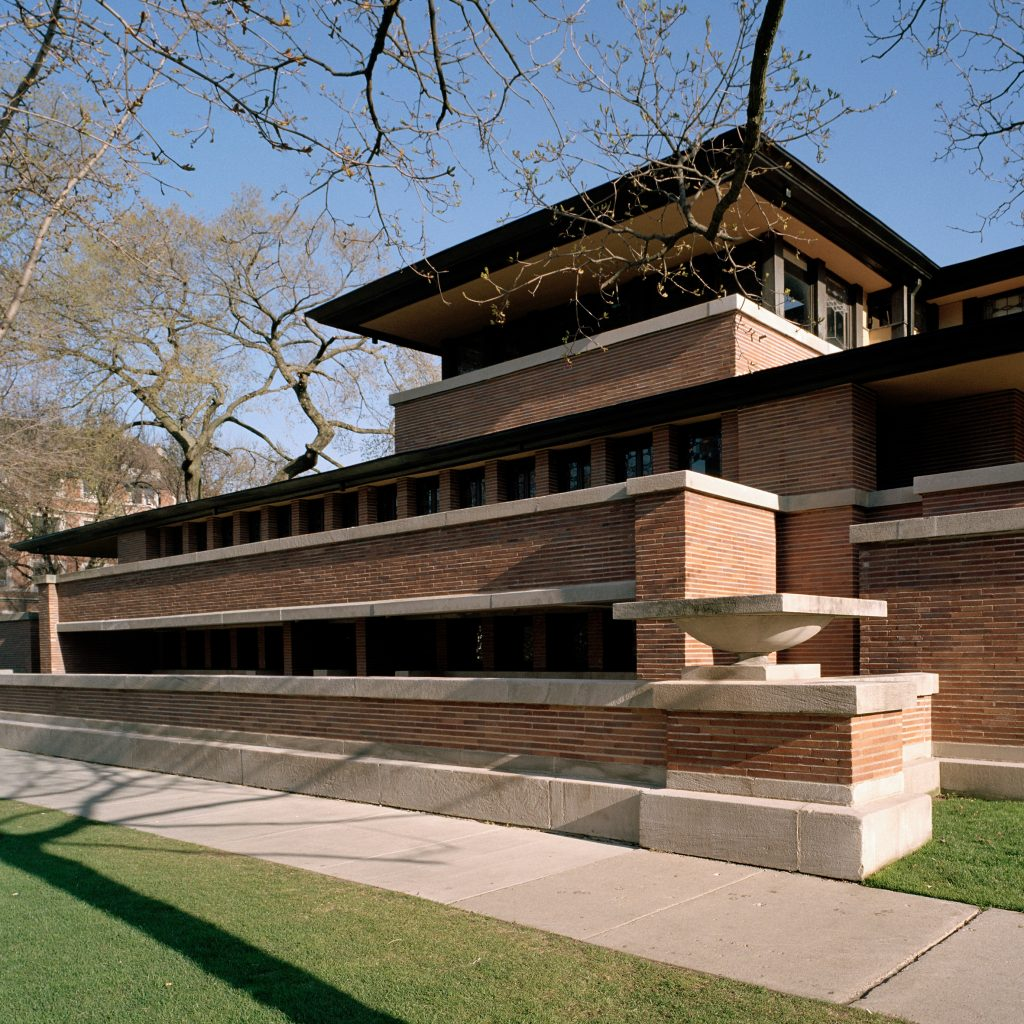
Arts and Crafts Interiors
Craftsmen both designed and executed the work
Aimed to create beautiful, useful, affordable, applied-art objects
Everything was designed: furniture, tapestry, stained glass, furnishing fabrics, carpets, tiles and wallpaper.
In Ameica, homes designed by Frank Lloyd Wright followed the same holistic philosophy
Humanized, open spaces that communicated with the outside, as well as each other created comfortable interiors
All interior elements complimented with the over-all architecture
Mission Furniture
Gustav Stickley
was considered the first DIY furniture, inspired by the Victorian Arts and Crafts taste for hand-made furniture
Art Nouveau
Jugendstil in Germany, Sezessionstil in Austria, Modernista in Spain, Stile Liberty or Stile Floreale in Italy, and Tiffany Style in America
rejection of 19th-century designs dominated by historicism
promulgated the idea of art and design as part of everyday life
Rooted partly in the Industrial Revolution and the Arts and Crafts Movement but also influenced by Japonism (especially Ukiyo-e prints by artists like Hokusai and his younger contemporary Hiroshige) and Celtic designs, Art Nouveau was given a major boost by the 1900 Exposition Universelle in Paris
used a variety of materials and employed intricate curvilinear patterns of sinuous asymmetrical lines, based on plant forms. Floral and other plant-inspired motifs are popular Art Nouveau designs, as are female silhouettes and forms
Hotel Tassel
Victor Horta, Belgium
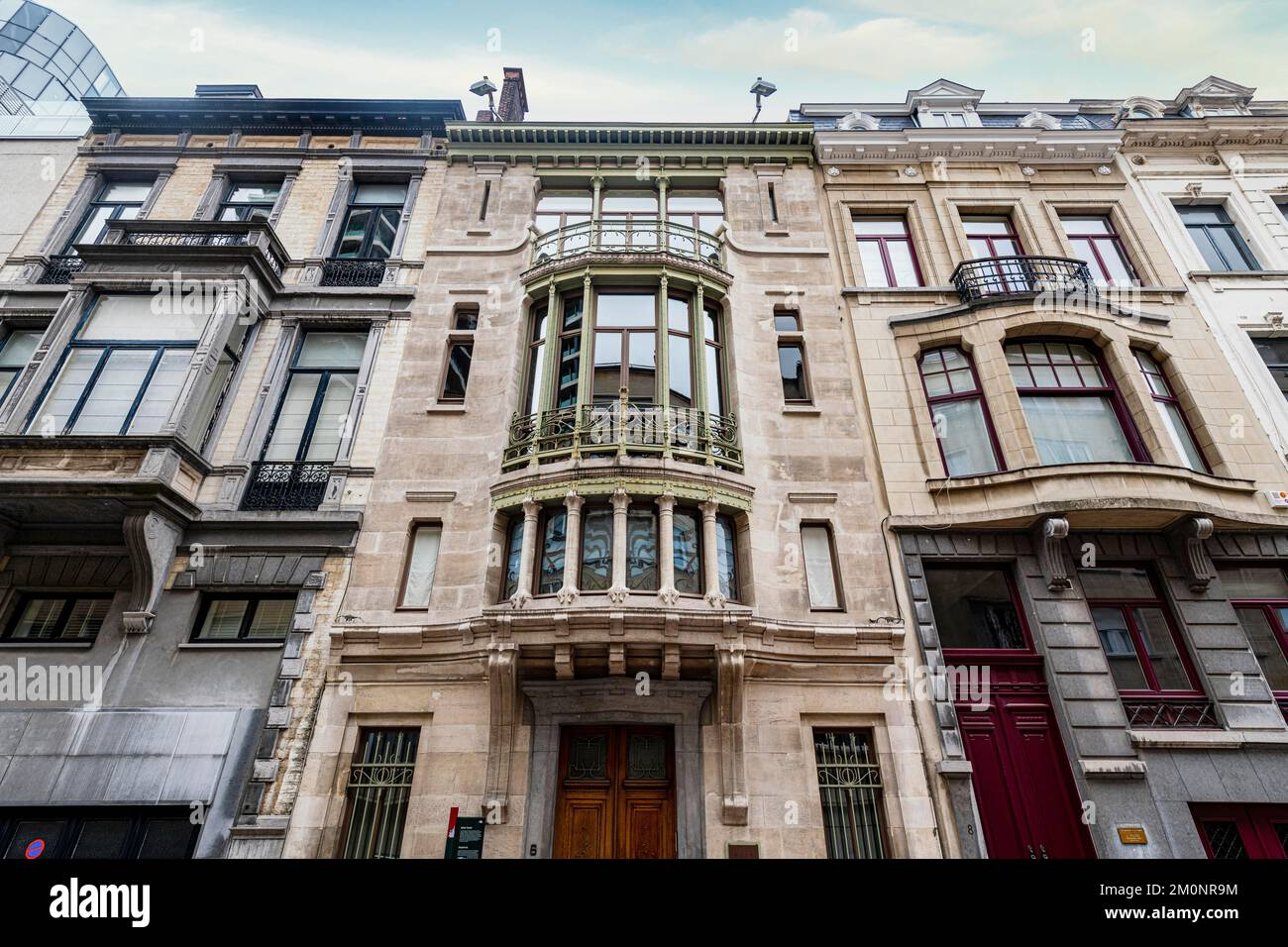
The Entrances for the Paris Metro
Hector Guimard, France
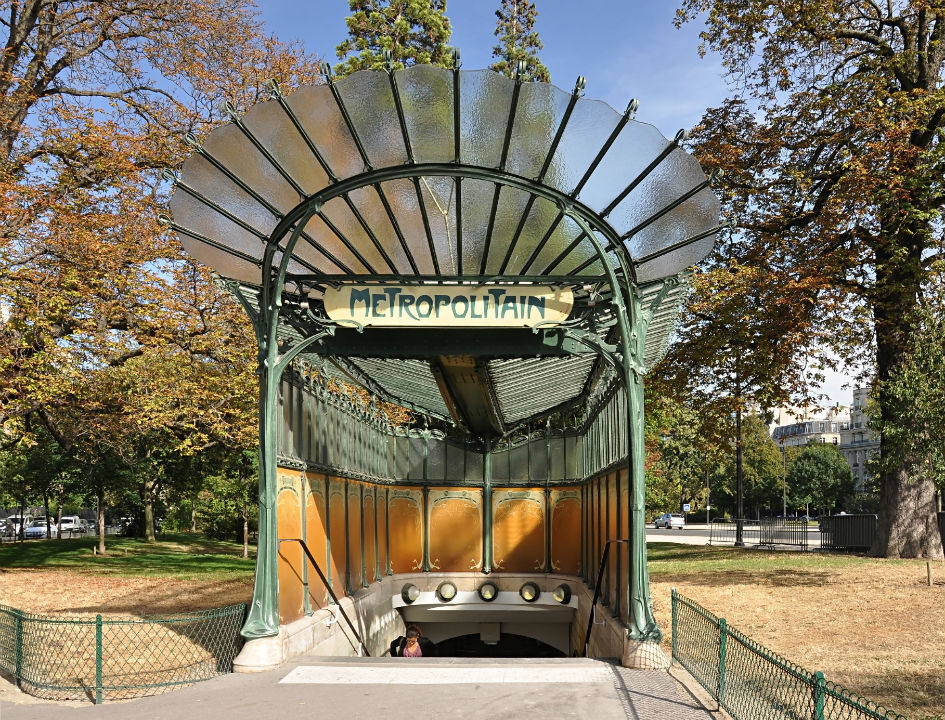
Casa Batllo, La Sagrada Familia
Antonio Gaudi, Spain
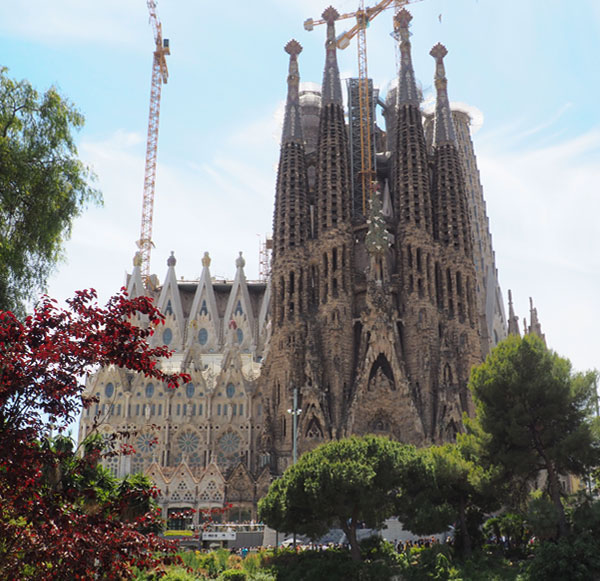
Secession Hall
Joseph Maria Olbrich, Austria
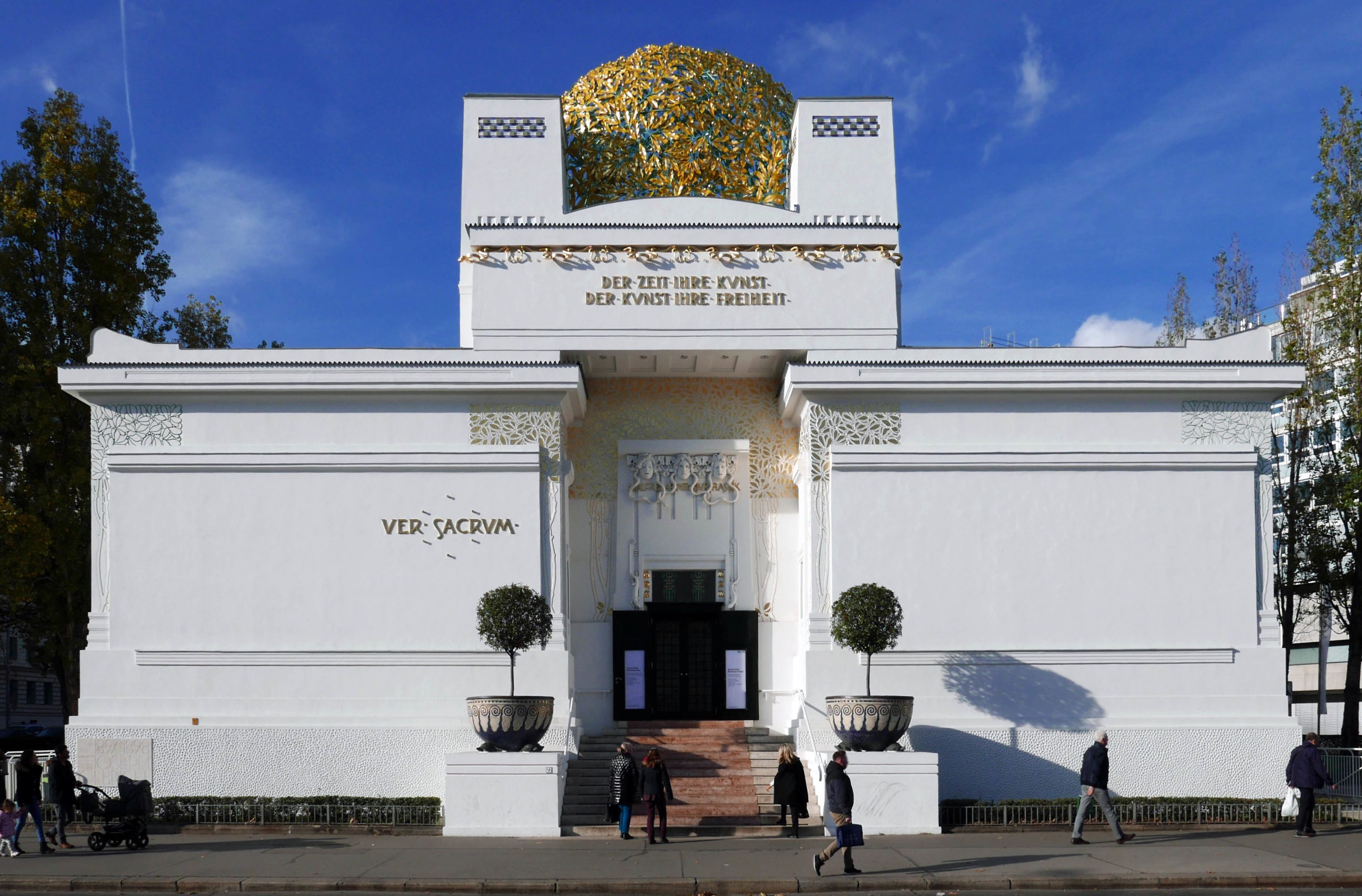
Arthur H. Mackmurdo
first designer whose historical precedents were sufficiently subdued for the new style to show clearly
Considered a proto-Art Nouveau designer of the Arts and Crafts movement, he produced asymmetrical designs with undulating stalks and wind-swept, flame-like characteristics.
His designs, however, were still confined to flat planes and very two-dimensional.
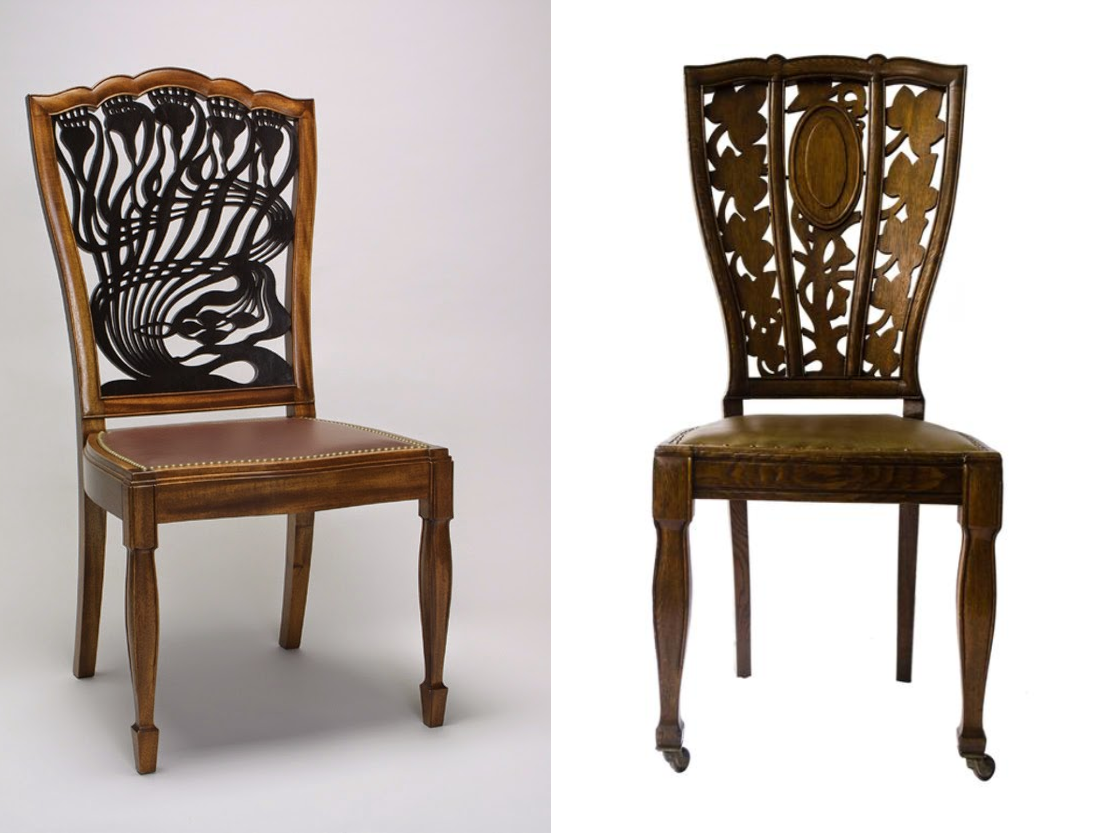
Charles Francis Annesley Voysey
Arts and Crafts designer.
His designs led Art Nouveau away from floral decorations.
bright, simplified falt-pattern tulips and stylized trees interlaced with birds and animals.
He believed that realistic ornaments were unsuited for decoration, so instead, plants and animals were mere symbols and were subjected to linear movement suggestive of Art Nouveau.
Showing Japanese inspirations, Voysey emphasized simplicity, often using white and delicate colors, as well as asymmetrically placed windows based on the needs of the interior and medieval elements.
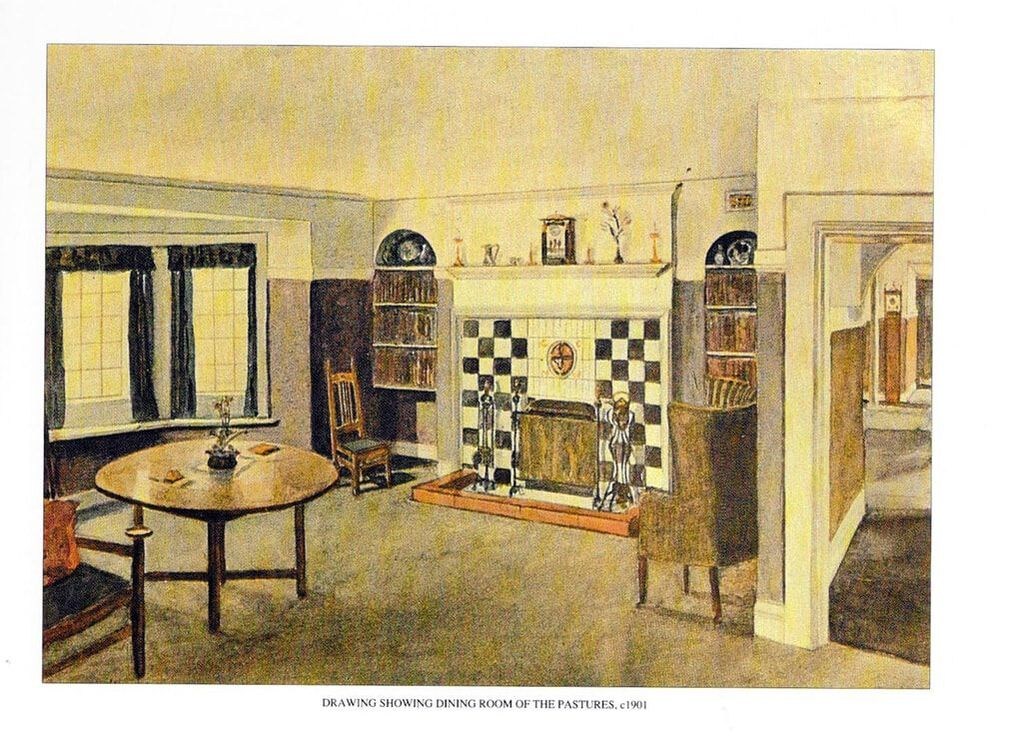
MacKay Hugh Baillie Scott
first to build small houses, which were considered innovative works of art.
favored open-plan homes and expanding spaces using shutters and stained glass openings in galleries and stairways.
Built-in furniture and recessed niches
highly developed color sense and flair for decoration, stylizing flowers and leaves in geometrical patterns and ornamenting flat surfaces with exotic woods, metal, and mother of pearl.
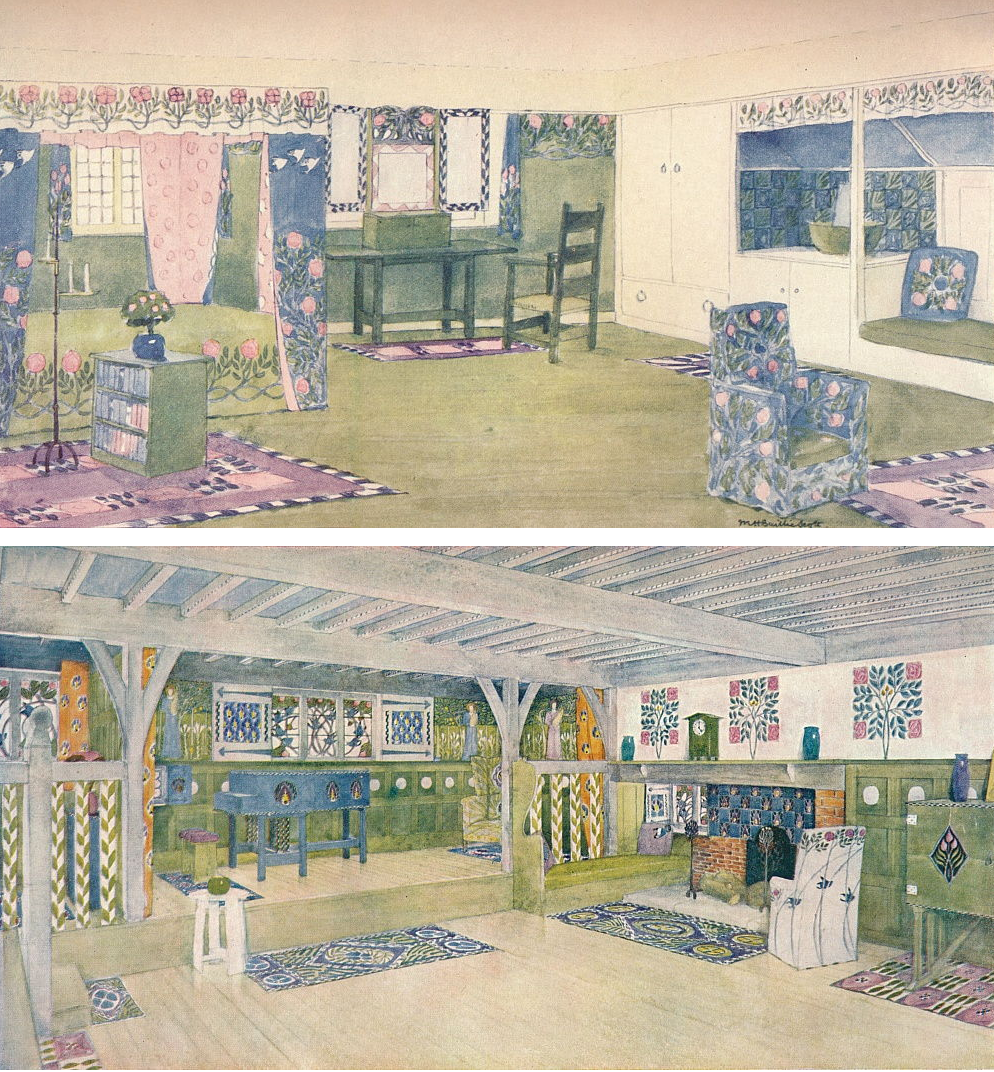
Charles Rennie Mackintosh
only English Art Nouveau designer who combined Celtic Revival and Japanese regularity
believed that construction determined the form of furniture, creating rectilinear designs and decorating them with structural elements.
pieces often looked uncomfortable with no upholstery

Antonio gaudi y Cornet
Art Nouveau movement's most creative and inventive designers
reveals no historical influences except maybe Spain’s Moorish past
total designer: designing exterior, interior, and furnishings
filled his creations with parabolic arches, undulating organic lines, and skeletal forms